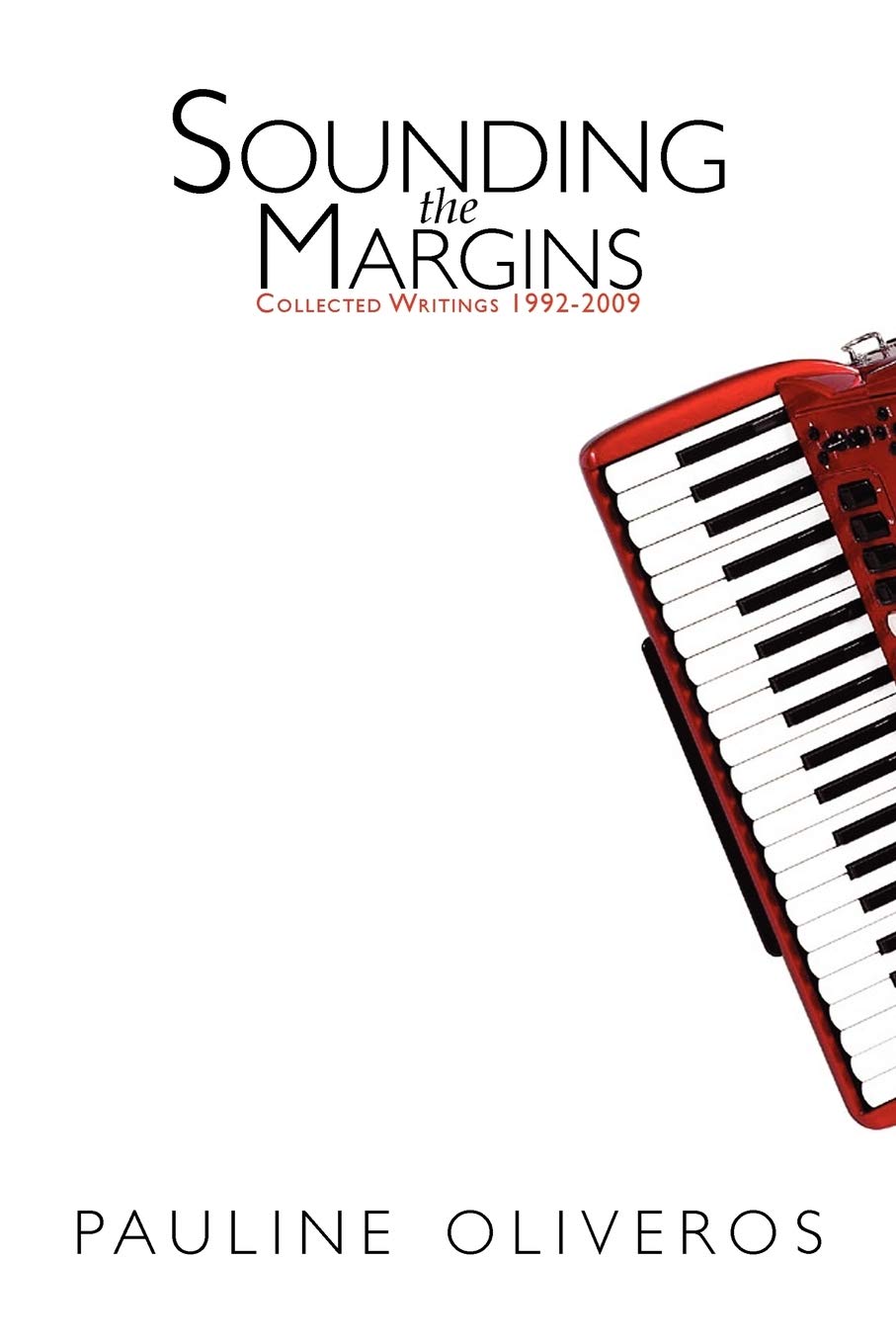My original title was to be music of the margins since I want to talk about women and LGBTQIA+ composers in the field of Experimental music: I’ll stick with this label even though we can be called composers of electroacoustic music or even just musicians. However, there are threads running through the oeuvre of these four composers: Ana Roxanne, Claire Rousay, Félicia Atkinson, and the woman who gave me the title for this month’s blog, Pauline Oliveros, which are variously: artistic, sonic, methodological, and even ethical. I am not suggesting that they belong to a single school or style, just that each in their own unique way has something to say about art and life, like those of us who identify as queer and make music in our own rather unique ways. On this point, I have been thinking things through, largely prompted by my current reading of Sylvia Plath’s life. I admit to being easily influenced and swayed by what I read and what I experience. It seems to me that every bit of art I come across helps explain something about me.
For example, before leaving the United States for Cambridge on a Fulbright scholarship, Sylvia Plath ditched her thesis on James Joyce’s Ulysses and started her thesis anew, The Magic Mirror: A Study of the Double in Two of Dostoevsky’s Novels. She wrote about the concept of doubles and insanity, not simply as literary criticism but also as a means of examining her own experience with mental illness; this was after her first attempted suicide and time spent in a mental asylum subjected to a course of Electroconvulsive Therapy. Since I had been reading a lot of self-confessional style literature, including Plath’s The Bell Jar and Carmen Maria Machado’s memoir of abuse within a lesbian relationship, In the Dream House, I also found myself looking for answers, understanding, or maybe even affirmation. And in my own art, what moves me to tears, anger, or a feeling of outsiderness, in everyday life can also find its way into my music. So, I began to think that if Sylvia Plath can find herself in the literature she reads, then so can I; and that if novels, memoirs, and biographies can tell us directly, soul to soul, so to speak, things that we can identify with, which will help us understand and maybe bring us into a place where our feelings of otherness can feel normalized (whatever that means), then art is much more powerful than mere entertainment; but I reckon we knew that anyway, otherwise we wouldn’t be SoundGirls.
Does art mirror life, or does it influence life? I have concluded that art is life, maybe not for all, but surely for some of us, it is. So, on the theme that Art is life and that the two are indivisible, I want to look at the art of four musicians who, to my mind at least, inhabit this space…the margins between this and that.
Each artist has a point to make other than a musical one, even though not particularly overtly. Each artist draws uniquely on their own experience to create their art, making it personal but also relatable for us the listener. As I have said in almost every blog I’ve written to date: to create art from one’s own experience of life endows it with authenticity since it (the art) owes its existence to a part of the artist’s life, not just their creative ability and technical prowess. So, maybe art is life.
To speak first of the music: the margins or the space between styles, epochs, and artistic boundaries are the ‘melting pots’ where the stylistic and musical features of one style mutate into another. Also, each of my four chosen artists is to a greater or lesser extent on the margins of personal identity, outside of the conventional or established norms.
Late Romantics: Richard Wagner, Gustav Mahler, and Richard Strauss pushed the barriers of tonality so much so, that there seemed nowhere else to go. Debussy and Ravel experimented with modal scales; Nationalists such as Jan Sibelius, Carl Nielsen, and Leos Janacek based much of their music on nationalist ideals as well as using parts of their country’s traditional music. Arnold Schoenberg started his musical journey in this late romantic style moving on to serialism followed by his pupils Alban Berg and Anton Von Webern. Each of these musicians was, at some point, outside of the mainstream, in the margins of musical history.
Ana Roxanne, Claire Rousay, Félicia Atkinson, and Pauline Oliveros as I suggested are outside of the mainstream both musically and, to a greater or lesser extent in terms of their identity. I don’t want to reduce these artists to labels even if they identify as part of the LGBTQI+ community; if I refer to this, it will be in relation to their art. However, to explain how my identity affects my art is something I can do, since I have outed myself many times.
The question is, how does my identity as a lesbian influence my art? Within my queer and feminist community here in Turin, we all ‘get’ each other, this is our normality. Like Monique Wittig, French philosopher feminist and lesbian, I find the straight mind difficult to understand and do not understand why I am not seen as any other woman. After all, I just love differently and prefer the company and wisdom of my girlfriends over that of men. At Pride last Saturday: 150,000 strong in Turin, once in the piazza where the assembled listened to the various speakers on the platform, I looked around at the absolute diversity of queer people here, from drag queens to school kids with their girlfriends, probably on their first Pride, and all colors of the rainbow. It occurred to me that the palpable sense of love, care, and acceptance of all of us for one another, was a feeling like no other. We all knew that we were safe, it felt like a giant warm hug. The mayor of Turin was at Pride along with the councilors of the department for equality and diversity. Therefore, it may be this ease of acceptance of the diversity of the queer community and our openness to all that it offers, that gives us a different view, and this different view is reflected in our art: open, honest, truthful, and authentic.
Anyway, getting back to my four chosen artists, I shall not assume anything in relation to what spurs their creativity, I’ll just note that there is a magic about them.
Just a brief note about intersectionality. Us queer folk may have additional challenges to face in straight society, for example, a disability, being an immigrant, or a person of color. Where each of these challenges intersect, the burden we have to bear is increased; one important challenge I and each of my four artists face is being a woman! Put simply, being a woman in a world where patriarchal privilege is still the norm means that we have to be twice as good…and of course we are!
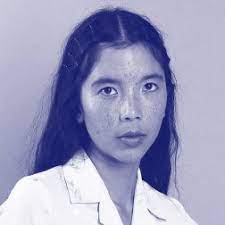 Ana Roxanne
Ana Roxanne
Ana Roxanne is, to my mind, a remarkable musician, who has made an immediate impact with her two recordings, particularly her most recent Because of a Flower which explores her status as Intersex, reflecting on her self-identity and gender introspection. The flower in question is the orchid. Ana explained what it meant to her.
The earliest memory where a flower had some significance was when I was 18, and I found out that I was intersex for the first time. Ana found an Intersex support group whose symbol was an orchid.
When I learned that most flowering plants are hermaphrodites, that felt significant to me. I saw flowers in this new sense because they’re universally very beautiful. Whereas historically, intersex people are not seen in the same way
She/he studied at Mills College, Oakland, California, partly founded, incidentally; by Pauline Oliveros. It is a small university known for its electronic music programs and its queer community. There she developed a style that is a mix of jazz, choral, Hindustani, and experimental music. Her music has been well received, Pitchfork described the record as a “meditation on gender, identity, and self-love”.
Ana’s comment about her song Every Sparkly Woman from her first EP is “a testament to my femininity and empowerment as a woman” is interesting since she says: I’m still trying to figure out my identity. I prefer using “he” and “she” pronouns as opposed to “they,” because I like the idea of exploring both. Gosh. I just want to include both equally.
When asked what gave her gender euphoria? Quite a bold question, I have to say, she replied:
In a lot of ways, since I’ve come out, I’ve thought a lot about little Ana who was a big tomboy, and really feeling connected with that little person. Experimenting with clothes, it gives me joy.
Her Album mentioned above is quite eclectic but highlights seem to be Take the Thorn, Leave the Rose, a quotation from George Herbert, poet, and Church of England clergyman which has obvious references to the imposition of non-consensual genital surgery on intersex children, highlighting the obvious dilemma of which way to go…It contains a sampling of one of the last recorded castrati, and again the symbolic reference is obvious.
The whole album is beautiful, and I say, just listen to it all! Venus has some very significant lyrics penned by Ana herself alongside evocative music. I might also mention A Study in Vastness as an example of a drone-based piece much in the mold of Félicia Atkinson’s Everything Evaporate, even if Ana’s is a delicate mix of synth and her own voice.
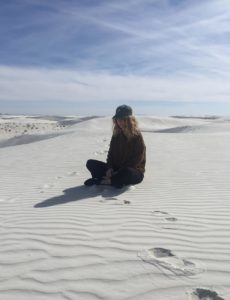 Félicia Atkinson
Félicia Atkinson
Opening the window, I look at the light, it connects me to something more vast.
Having seen quite a few of her posts on Instagram, it is clear that Félicia loves the landscapes around her and those inspire her. Many posts are seascapes of the Normandy coast where she lives. In an interview, she spoke about her recording and, like those of us in a kind of transmogrified musique concrète tradition, our musical material is whatever we can find and then take it from there. So she spoke about recording with an iPhone and sometimes a Zoom recorder; I guess it works on the principle that your best microphone and recording equipment are the ones you have with you. As we’ll see later, much of Claire Rousay’s samples are recorded on iPhone. I rarely have my Zoom H6 with me and so I often use my iPhone as well. In fact, there are three iPhone samples on my Sylvia Plath piece: one with my iPhone; it’s a rare moment of distress and rage and exists nowhere else, so it is mine, including the dogs barking in the background. Another fragment is a recording of my daughter playing a cello melody that follows the curves of a reclining nude from an art exhibition in Turin, and a third sample recorded by my ex-girlfriend in a Swiss meadow, complete with wind noise which, rather than a defect, becomes prime musical material. How they are treated, is all part of the compositional process, notwithstanding the symbolic reason for their inclusion in the composition. I may talk more about this with reference to an ongoing composition in which I am making artistic decisions about what to include and how to use it and the symbolism behind the sample’s presence, in another blog, but for now, back to Félicia.
Quite a lot of her oeuvre appears to be related to the French tradition of Musique Concrète but has moved into the 21st Century, not just in technical matters of equipment, compositional techniques, and performance but also in its ethos of contemporary appeal and seems to have found its place in the art of a new generation of women composers pushing the boundaries of musical genres.
What drives her composition? What makes her tick? In a typically French fashion, her discussion of the roots and inspiration for her music is at once airy, somewhat vague, and eclectic in their use of non-musical sources. In this discussion of the thoughts behind her album: The Flower and the Vessel, she cites a film, various texts, art, and things seen in nature like a seagull, and poetry, and makes unusual links between these.
Félicia Atkinson Shares the Stories Behind Her Surreal New Album
In the same way that I create a narrative for my pieces, often inspired by either personal experiences or philosophizing on something I’ve read, which drives the whole work, Félicia seems to use a broad selection of art forms to give shape to the ideas which will become her music. Incidentally, the first piece of her’s that I heard was on the BBC’s Night Tracks: Moderato Cantabile which seemed a very sweet tempo marking but turns out to be the name of a novel by Margaret Duras.
In terms of her use of recorded material, a significant number of her pieces make use of whispered text as a prime musical element. Some of the text spoken on The Flower and the Vessel was recorded on her iPhone, in hotel rooms while pregnant and on tour. This suggests to me that her art is a flowering of her life experiences, including her reading, the landscape, dance, poetry, and so many more sensations, I am sure. I would hazard a guess to say that the art of Felicia Atkinson is an eclectic manifestation of life. So, maybe art is life.
The Flower and the Vessel
Everything Evaporate
Un Hiver En Plein Été
When asked what her views on the future of music might be; maybe she is speaking from the margins…
I think music always existed, even before humans appeared. I believe thunder is music, fire burning, or bird’s sounds are music. I love to hear the water running from a shower or the noise of a broom on a wooden floor, a kettle, or heartbeat. I love to hear children speaking in a language I don’t understand and to listen to the ocean in the night. I also often think of non-hearing people and the way they still connect to vibrations and such kinds of emotions. I think also about the silent places of the cosmos and for me, all of that is connected.
Felicia’s response to the music of the future leads rather nicely to look at the music of Claire Rousay whose name has a French touch about it but she is, in fact from San Antonio, Texas.
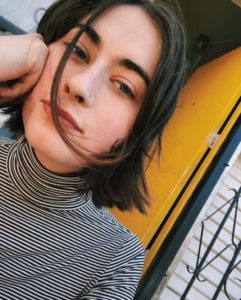 Claire Rousay
Claire Rousay
Claire Rousay engages all her senses with the music she creates, but also in life.
This interview is extremely interesting since Claire shares an ethos on the saliency of the sound samples she uses.
When I listen to her music, and again, her use of oft times unprocessed sounds, reminds me so much of the early experiments in Paris with Pierre Schaeffer and Pierre Henry, I have the sensation of being beside her as she walks somewhere, chats to a friend, just hanging in her house and yet her musicality is so rich and the music put together in a way that makes it sound as if it has always existed. It also demands the careful attention of the listener, something that we will talk about in respect of the work of Pauline Oliveros in a while.
When talking about her musical material which, for me, gives her music its unique qualities, she says:
I get emotionally attached to certain sounds and recordings, and sometimes it is not even a specific sound but the environment where I have recorded the sound and the experience I had.
When I started working on this album, “Everything perfect is already here”,
in 2020 I was stuck in New York, in the middle of a pretty intense lockdown. I went to Marielu [Donovan] ’s apartment, and we were just planning to hang out. But then an idea just came up to me spontaneously: “Your harp sound is so wonderful, would you like to play it on my record?” I said to her. And she replied, “Yes, we should book some studio time!”. I said, “No, I have my phone right here, I could just record you playing in the background”. When you listen to “Everything perfect is already here,” there is the harp part that I have edited so that you can hear the musical material, but there was so much room noise and the conversations between us that I haven’t included. I have edited only some parts of that back into the piece.
There is so much context that is not available in the record that I think about: hanging out on the couch, her giving me wine, and cooking noodles for us. I had an amazing experience during covid with a really good friend, and coincidentally that has resulted in having her playing harp in half of the record. So, I am holding on more to the social aspects of recording the harp, and those aspects that come with collaboration. They could be more important than the actual sound. Of course, if the sound is bad I am not going to include it, but if there are little imperfections here and there, like somebody closing the door or the noise of air conditioning, I think it is a really beautiful thing to have because you wouldn’t get those sounds in a studio. I think that a lot of music feels really sterile nowadays, it is not as human as it could be.
I have included the whole quote since she makes a couple of key points that are relevant to this blog. In my very first blog, I referred to ‘dirty sounds’, extraneous sounds such as the wind noise on my ex’s recording from the Swiss alps which, in my opinion, become good musical material since they represent the ‘life’ of the art. In my case it exists as a record of a gift from a lover who is no longer with me but to remove the noise would be as if I were removing a part of her from my life. The wind noise existed, and so did she! I think Claire is saying pretty much the same thing about her iPhone recording; she has even edited some of the background noise back into the piece.
So, Claire, can we agree that art is life? Oh, and by the way, Claire is in that margin which gives her a unique view of life and art. She, like Ana Roxanne, is a part of the queer community with a degree of Intersectionality to deal with, but she doesn’t feel the need to champion who she is or how she is. She goes on to say, and I really get this since I have so many friends who feel the same:
A lot of people who are trans are very proud of it and want to talk about it. It’s a huge part of their identity: sometimes it’s part of their personality. Personally, not so much. I want to make sure people are taken care of. And to do my part to make sure people are safe and advocate for people who maybe don’t have the resources to feel comfortable in their body. I don’t want to be a spokesperson for trans people. Everybody’s experience is different.
So Claire Rousay, I love you, who you are, and your music and, as you say, everything perfect is already here.
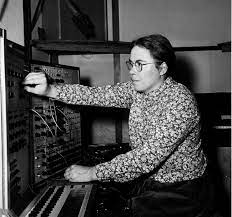 Pauline Oliveros
Pauline Oliveros
An openly lesbian musician who coined the terms Deep Listening and later Sonic Awareness. Both terms are at the heart of listening to this kind of music.
Deep listening makes the difference between hearing a drone and hearing what’s inside the drone and where its sounds travel. A lot of so-called ambient music is drone-based and often does not draw attention to itself but, for example, the drones used in Lear from the 1989 Album, Deep Listening (link below) has movement and in the recording one can hear melodies interweaving, slowly taking the listener on a journey.
In 1988, as a result of descending 14 feet into the Dan Harpole underground cistern in Port Townsend, Washington, to make a recording, Oliveros coined the term “deep listening” a pun that has blossomed into an aesthetic based upon principles of improvisation, electronic music, ritual, teaching, and meditation. This aesthetic is designed to inspire both trained and untrained performers to practice the art of listening and responding to environmental conditions in solo and ensemble situations
Later a new musical theory was developed by Oliveros, “Sonic Awareness”, and is described as “the ability to consciously focus attention upon environmental and musical sound”, requiring “continual alertness and an inclination to be always listening. From this theory, Pauline Oliveros introduced the idea of “Sonic Meditations” which she first practiced with a women’s group. She described listening as a necessary pause before thoughtful action: “Listening is directing attention to what is heard, gathering meaning, interpreting and deciding on action”. In 1971 she published scores to the Sound Meditations. This summary of Pauline Oliveros’s contribution to music is summed up succinctly by this writing on the back cover of her book which has lent its title to this month’s blog
Pauline Oliveros has been “sounding the margins” for her entire career: exploring borders between tuning systems and between composed and improvised music; pushing the limits of what is possible in music with newer technologies and new ways to extend the range of aural perception; making music on the margins as a woman experimentalist composer; playing the accordion (an “outsider” instrument), and working to eliminate borders between musicians both in real space and in cyberspace.
https://open.spotify.com/album/1h4VM1Nsgav7liCdWBoGlC?si=s9OiXxmaSoaXbEx_4KGTjQ
Of course, there are many other women composers working in this field, but I had to make choices. I chose Ana because she occupies quite a unique space as a musician sounding the margins; to deal with your gender identity openly through your music, is a brave thing to do. Félicia is here because I just love her music and its inspiration, not forgetting my, perhaps idiosyncratic, view that she is in the same French tradition as the one I come from. Claire is just a bright young thing who seems to be reinventing what sound art means; I don’t think I can say much more than that. Pauline Oliveros, redefined how we can listen to and perceive music and kind of summarizes and gives point to what this blog has been about.
Today, while listening to Pauline Oliveros’s Cistern Chapel Chance Chants, I heard children playing in the street outside my window and it created a whole new listening experience for me. Art inside and life outside; I hope Pauline would have approved.
Love from Torino in Pride month
Frà
